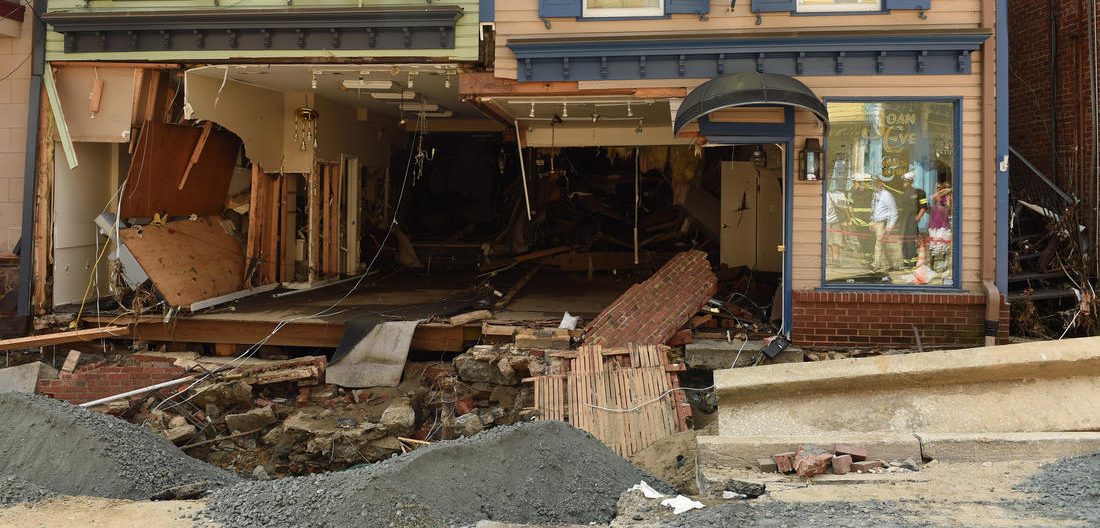

These structures are a contentious component of another major issue: how to improve drainage to allow more water to be efficiently conveyed through the city when it is needed. Can they be preserved, or must they be removed to make room for more efficient drainage? Of particular concern is a group of structures at the bottom of the Historic District and near the confluence of the smaller rivers into the Patapsco. One of the many challenges faced by Ellicott City, located just 11-mi west of Baltimore, is the number of historic buildings that reside in town, especially along the currently favored drainage way for floodwaters. Water rushes down Main Street in Ellicott City during severe flooding in 2018. In fact, the dominant mode of flooding has evolved from high water on the Patapsco backing up into the city to heavy runoff from intense rainfall surging through the city on its way to the confluence of rivers. When the capacity of the drainage and storm sewer infrastructure is exceeded, Main Street becomes the alternative path to the Patapsco River, which itself, during such events, is likely higher than normal and becomes a barrier to the efficient discharge of the urban storm water. While its location at the confluence of multiple streams and creeks was a distinct advantage as a mill town, today, as an urban center, the steep slopes and largely impervious surfaces are all too effective at collecting rainfall and accelerating its movement into the overtaxed storm drainage system. In addition, while severe storms fall on rich and poor alike, socially vulnerable populations are struggling the most to deal with this increasing threat.Įllicott City fits this dilemma exactly.

There also is a need to define and implement customized solutions for the wide variety of situations, not a “standardized approach.” UNIQUE CIRCUMSTANCESĪs pointed out by the National Academies and University of Maryland/Texas A&M-Galveston studies, some of the greatest difficulties include finding flood hazard assessment methods adequate for the complexity and variety of urban situations, development of stronger coordination across agencies, and dramatically increasing local to state to federal resource commitments. We have placed the responsibility in the hands of individual communities. Perhaps, though, their greatest frustration is that as a nation we have not done much to address this risk, until in the aftermath of a major disaster hitting. Couple that with a recent trend of more frequent and severe storms, particularly in the Northeast, and what results in a dangerous equation for cities and towns nationwide.

This year, two landmark studies were published on urban flooding in the United States-one by the National Academies, “Framing the Challenge of Urban Flooding in the United States” and the second by the University of Maryland and Texas A&M-Galveston, “The Growing Threat of Urban Flooding, A National Challenge.” Both studies point out the dilemma faced by, literally, thousands of communities across the country.Įach local area has their own situation experiencing the growing threat of increased flooding stemming from decades of continuing urbanization, encroachment on floodplains, and crumbling storm sewer and drainage infrastructure that has not kept pace with growth and modern standards. These damaging events left many questioning their ability to recover and the status of their future. The most recent floods, occurring in 20, broke standing records and produced extensive losses to businesses and residences in the historic part of the town. Since its establishment as a mill town on the banks of the Patapsco River in the late 1700s, Ellicott City, Md., has experienced some degree of flooding on the average of every 12 years.


 0 kommentar(er)
0 kommentar(er)
